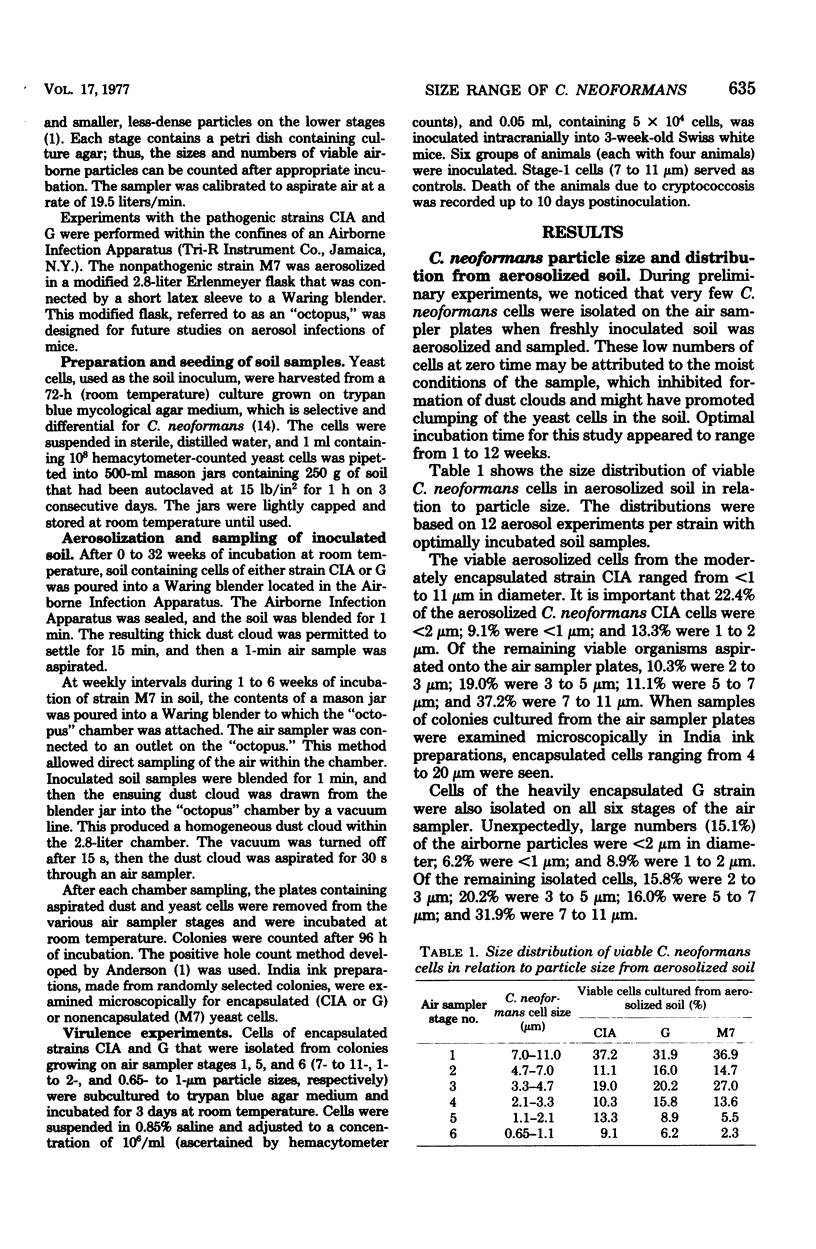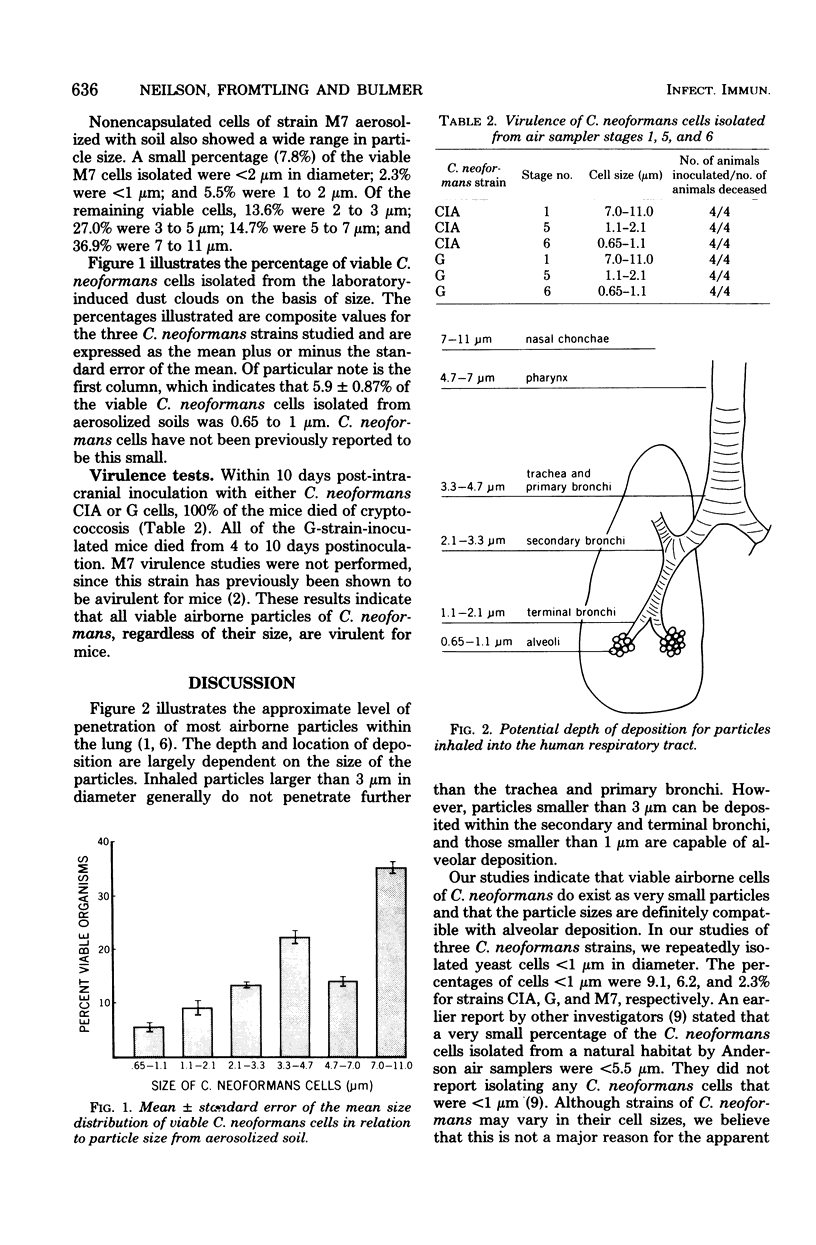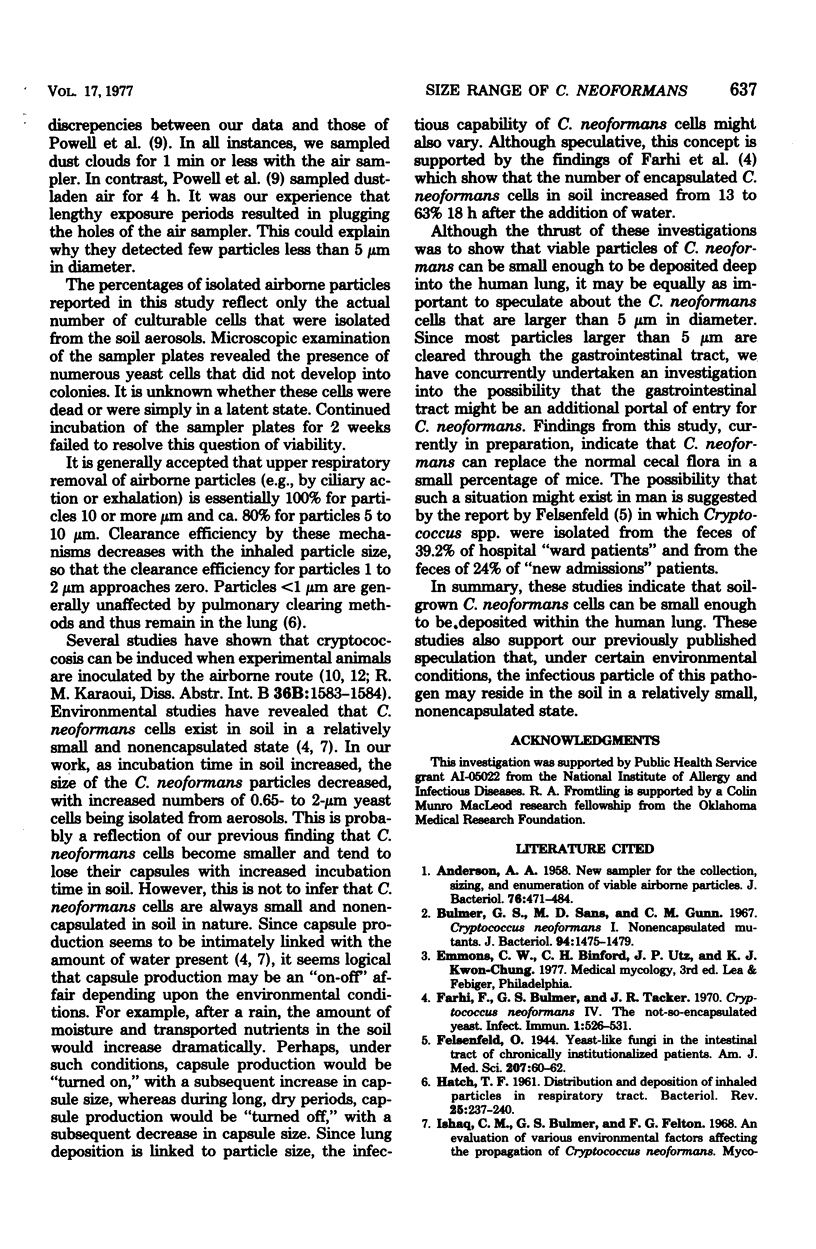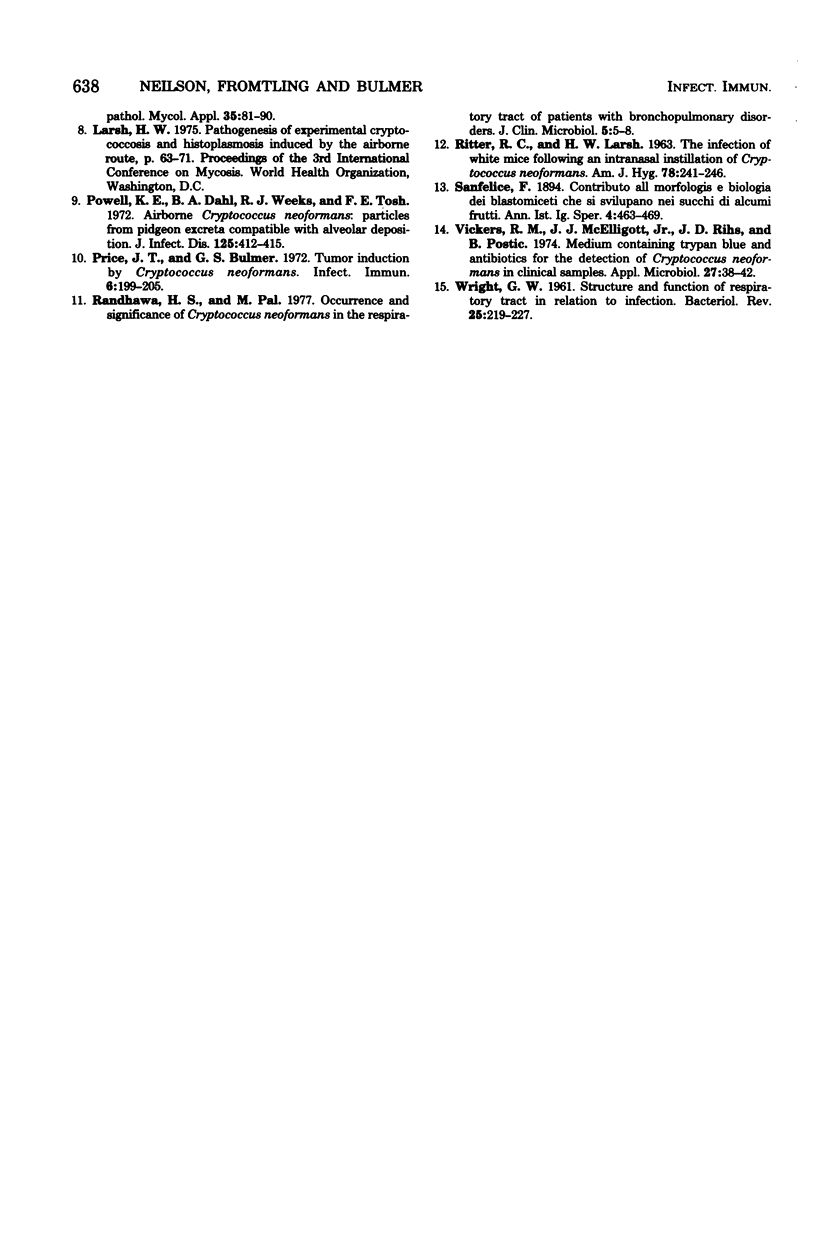Abstract
Although cryptococcosis is characterized as a chronic central nervous system disease, it is generally accepted that the lungs are the primary portal of entry for the etiological agent. Despite this, there is a distinct lack of evidence that viable airborne particles of Cryptococcus neoformans are small enough to reach the alveoli. Two encapsulated strains and one nonencapsulated strain of C. neoformans were inoculated into 250-g quantities of sterile soil. Throughout the 0 to 12 weeks of incubation, this soil was aerosolized in a sealed chamber with a Waring blender. Samples of the resultant dust cloud were taken with an Anderson air sampler from which the numbers and sizes of viable airborne particles were determined. Of the viable organisms aspirated into the air sampler, 15% were 0.65 to 2 micron in diameter. As incubation time in soil increased, the size of the particles decreased, and increased numbers of C. neoformans cells 0.65 to 2 micron in diameter were isolated. The presence of viable cells less than 2 micron in soil aerosols indicated that, under certain conditions in nature, C. neoformans cells exist in sizes that are capable of deep lung deposition.
Full text
PDF




Selected References
These references are in PubMed. This may not be the complete list of references from this article.
- ANDERSEN A. A. New sampler for the collection, sizing, and enumeration of viable airborne particles. J Bacteriol. 1958 Nov;76(5):471–484. doi: 10.1128/jb.76.5.471-484.1958. [DOI] [PMC free article] [PubMed] [Google Scholar]
- Bulmer G. S., Sans M. D., Gunn C. M. Cryptococcus neoformans. I. Nonencapsulated mutants. J Bacteriol. 1967 Nov;94(5):1475–1479. doi: 10.1128/jb.94.5.1475-1479.1967. [DOI] [PMC free article] [PubMed] [Google Scholar]
- Farhi F., Bulmer G. S., Tacker J. R. Cryptococcus neoformans IV. The Not-So-Encapsulated Yeast. Infect Immun. 1970 Jun;1(6):526–531. doi: 10.1128/iai.1.6.526-531.1970. [DOI] [PMC free article] [PubMed] [Google Scholar]
- HATCH T. F. Distribution and deposition of inhaled particles in respiratory tract. Bacteriol Rev. 1961 Sep;25:237–240. doi: 10.1128/br.25.3.237-240.1961. [DOI] [PMC free article] [PubMed] [Google Scholar]
- Ishaq C. M., Bulmer G. S., Felton F. G. An evaluation of various environmental factors affecting the propagation of Cryptococcus neoformas. Mycopathol Mycol Appl. 1968 Jul 12;35(2):81–90. doi: 10.1007/BF02049570. [DOI] [PubMed] [Google Scholar]
- Powell K. E., Dahl B. A., Weeks R. J., Tosh F. E. Airborne Cryptococcus neoformans: particles from pigeon excreta compatible with alveolar deposition. J Infect Dis. 1972 Apr;125(4):412–415. doi: 10.1093/infdis/125.4.412. [DOI] [PubMed] [Google Scholar]
- Price J. T., Bulmer G. S. Tumor induction by Cryptococcus neoformans. Infect Immun. 1972 Aug;6(2):199–205. doi: 10.1128/iai.6.2.199-205.1972. [DOI] [PMC free article] [PubMed] [Google Scholar]
- RITTER R. C., LARSH H. W. THE INFECTION OF WHITE MICE FOLLOWING AN INTRANASAL INSTILLATION OF CRYPTOCOCCUS NEOFORMANS. Am J Hyg. 1963 Sep;78:241–246. doi: 10.1093/oxfordjournals.aje.a120342. [DOI] [PubMed] [Google Scholar]
- Randhawa H. S., Pal M. Occurrence and significance of Cryptococcus neoformans in the respiratory tract of patients with bronchopulmonary disorders. J Clin Microbiol. 1977 Jan;5(1):5–8. doi: 10.1128/jcm.5.1.5-8.1977. [DOI] [PMC free article] [PubMed] [Google Scholar]
- Vickers R. M., McElligott J. J., Jr, Rihs J. D., Postic B. Medium containing trypan blue and antibiotics for the detection of Cryptococcus neoformans in clinical samples. Appl Microbiol. 1974 Jan;27(1):38–42. doi: 10.1128/am.27.1.38-42.1974. [DOI] [PMC free article] [PubMed] [Google Scholar]
- WRIGHT G. W. Structure and function of respiratory tract in relation to infection. Bacteriol Rev. 1961 Sep;25:219–227. doi: 10.1128/br.25.3.219-227.1961. [DOI] [PMC free article] [PubMed] [Google Scholar]


